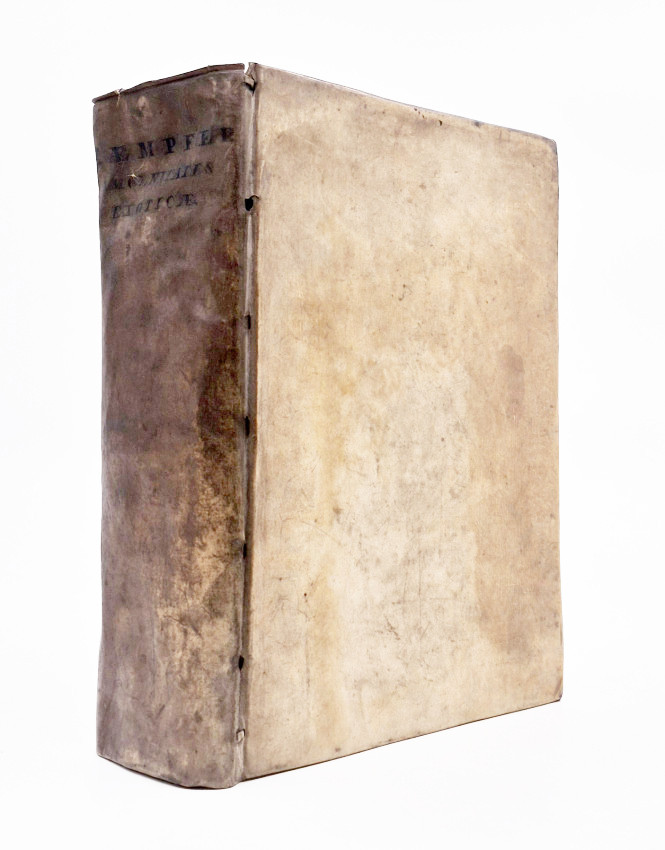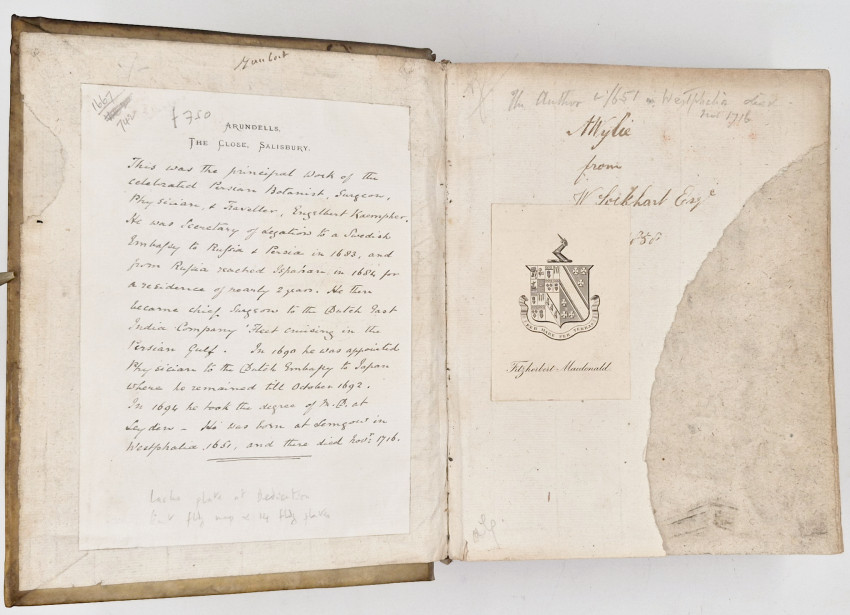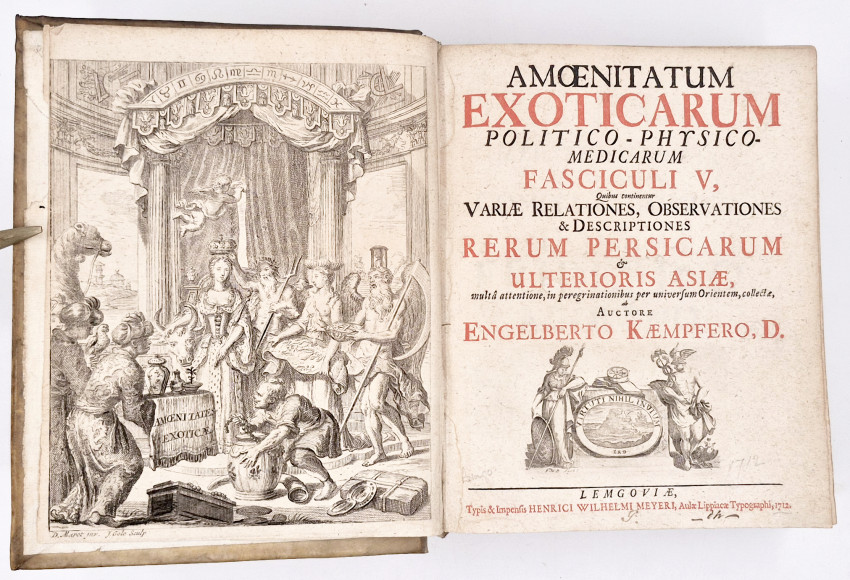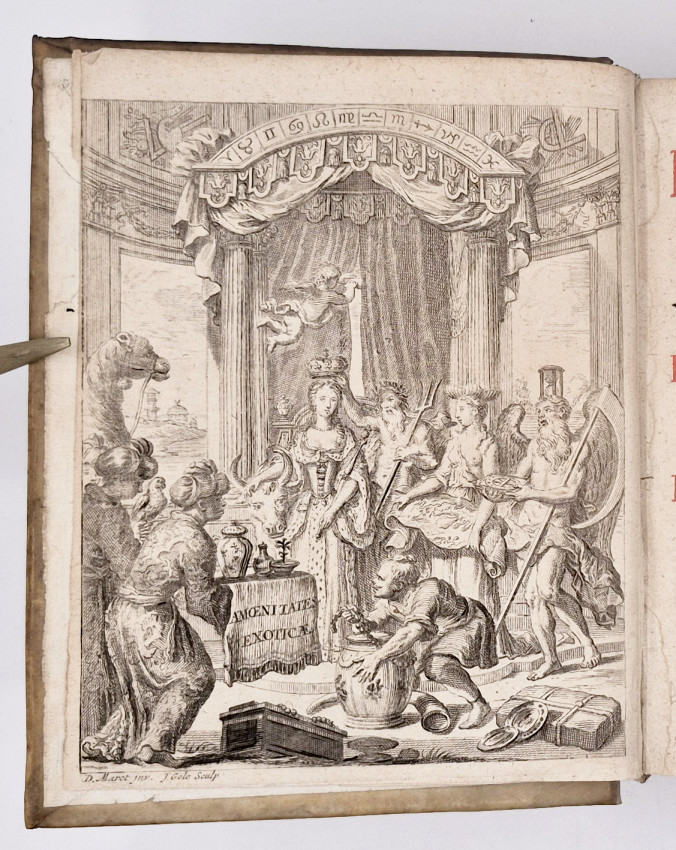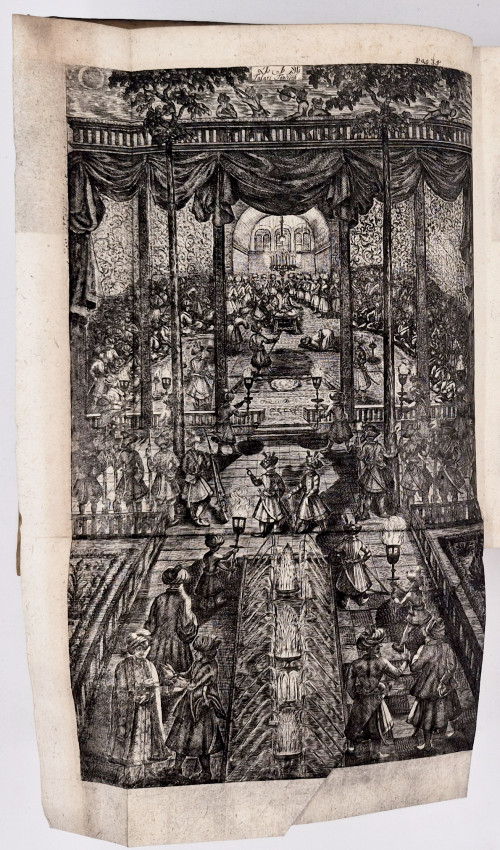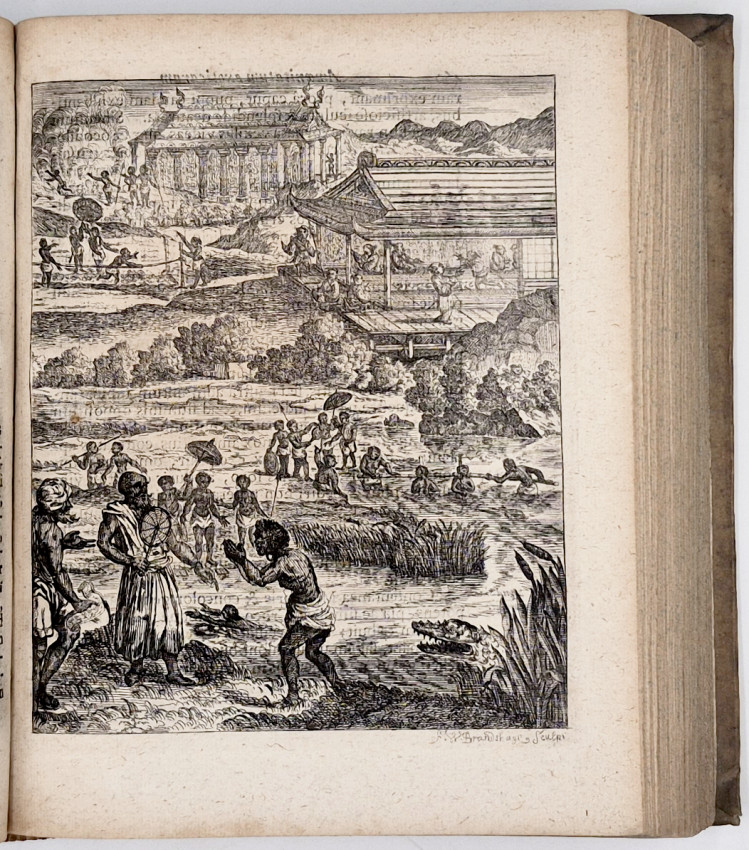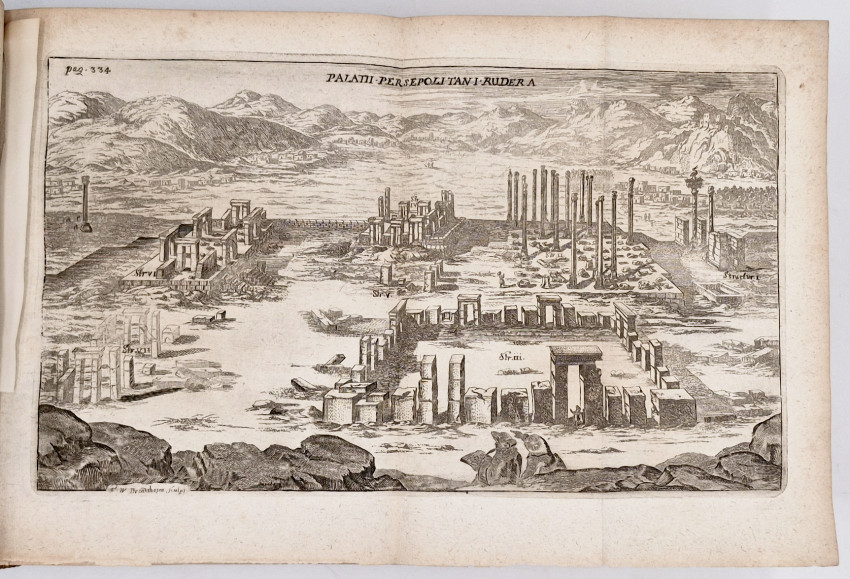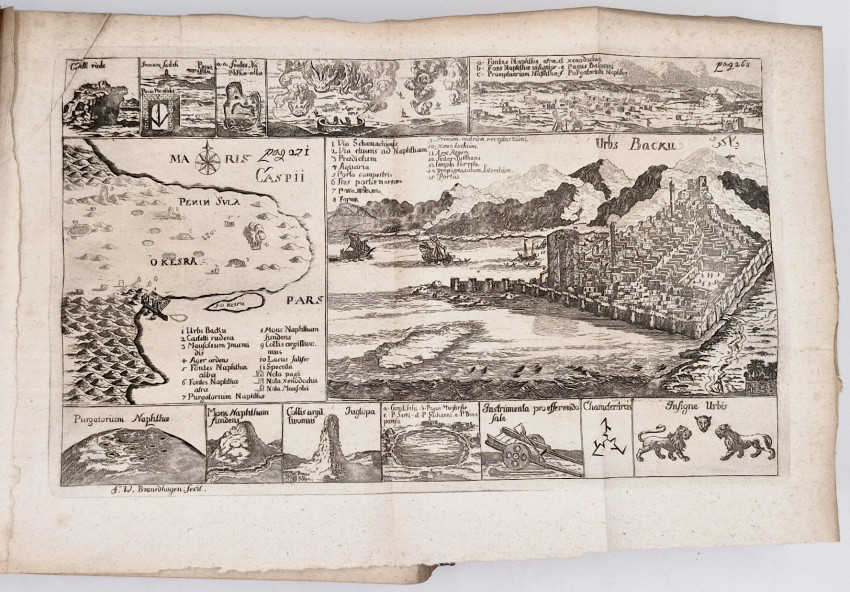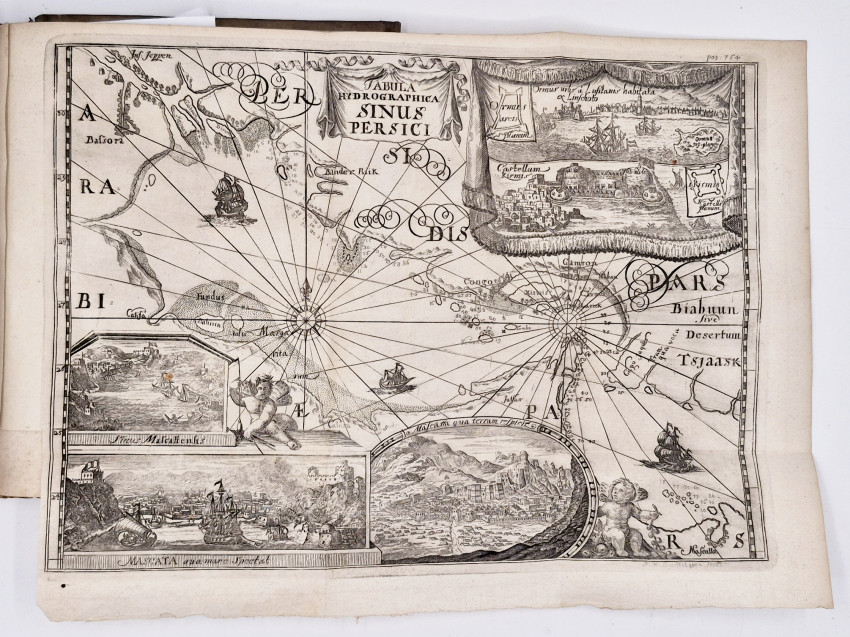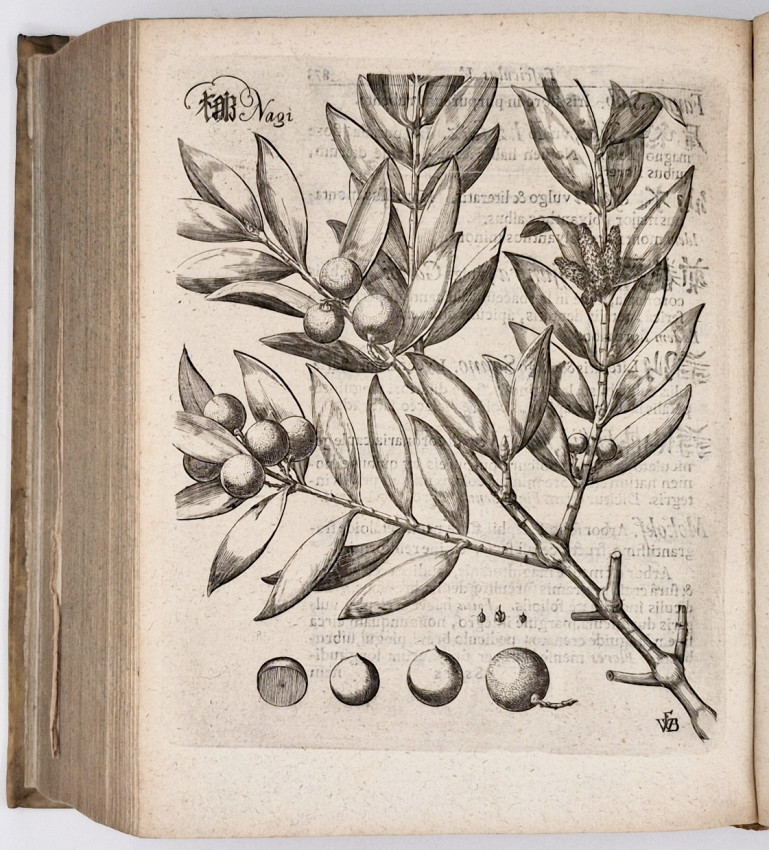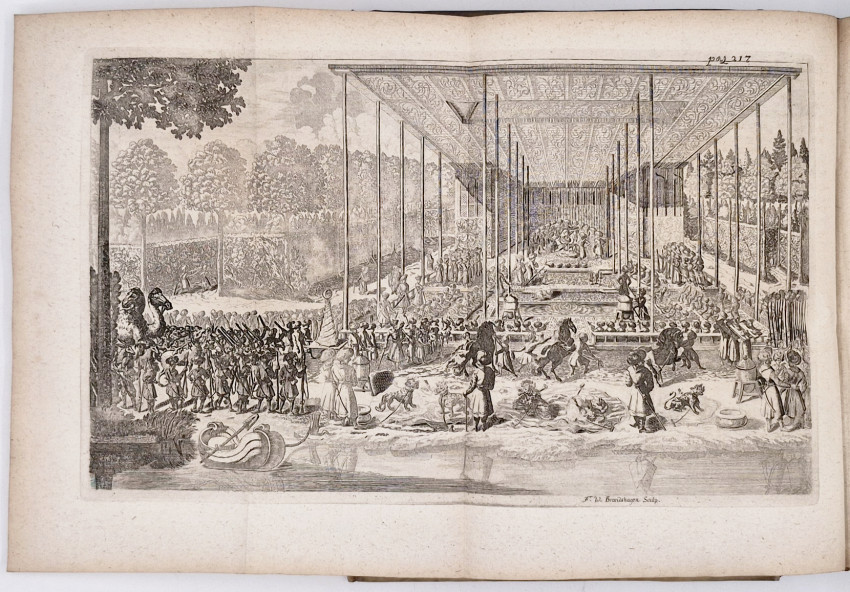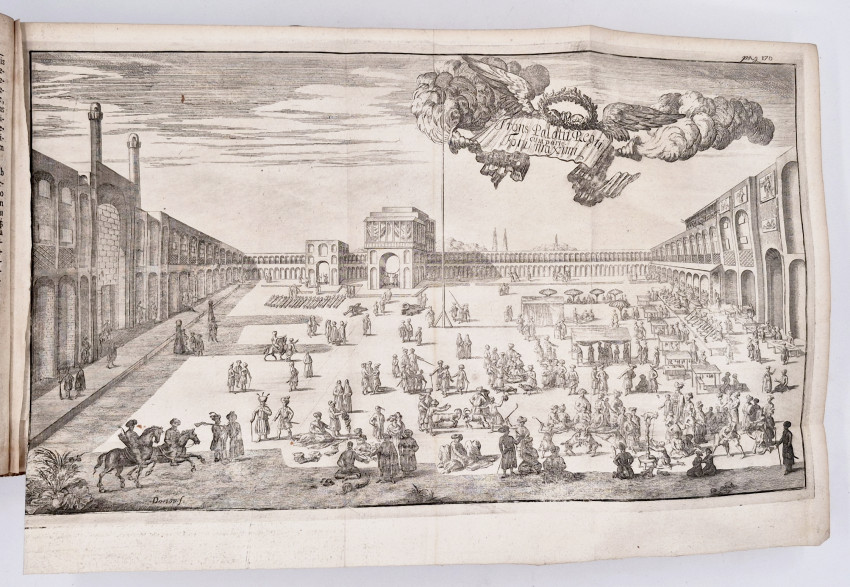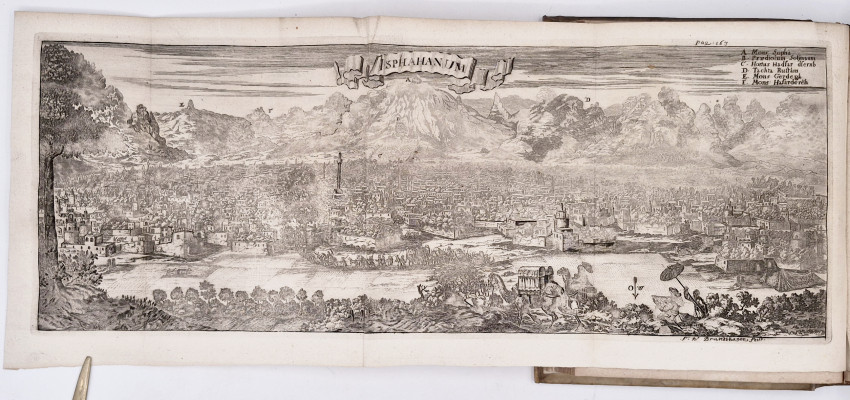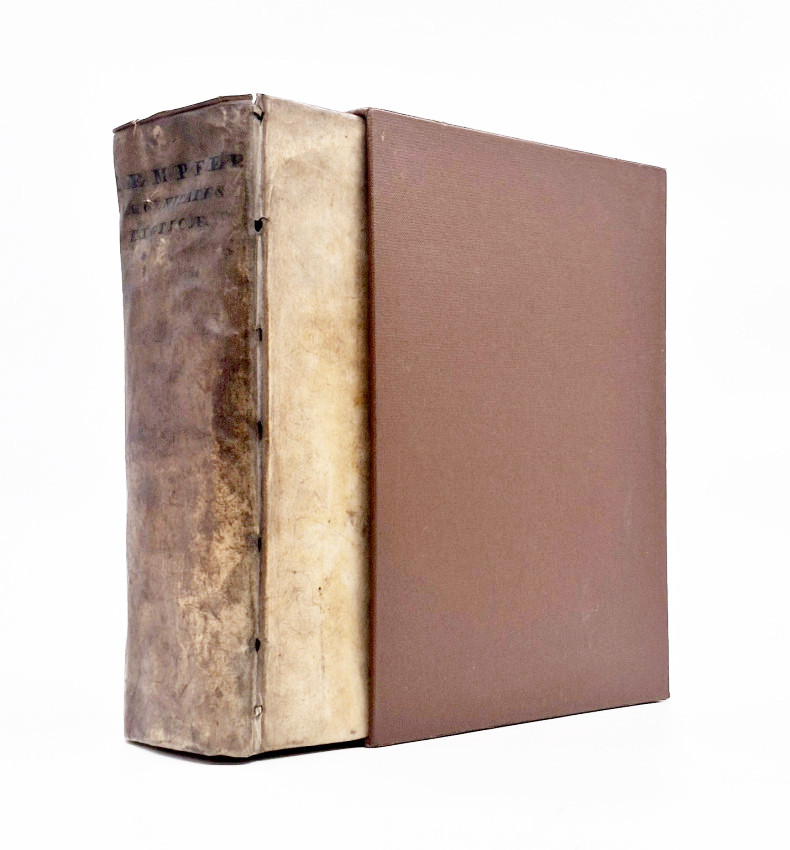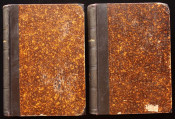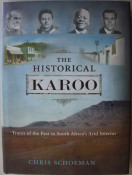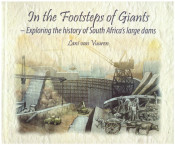First Edition: (xviii), (ii), 3-912, (xxxii (index) pages, engraved frontispiece, title printed in red and black, 16 engraved folding plates including the large panorama of Isphahanum and a folding chart, 74 full and half page engraved and woodcut plates many of botanical subjects, contemporary full vellum (back darkened) title hand lettered on the spine, a very good copy.
A manuscript note on the letterhead of Arandells, The Close Salisbury, is affixed to the front paste-down endpaper which gives a brief biography of Engelbert Kaempfer, also with the bookplate of Fitzherbert Macdonald on the free endpaper (part of the endpaper is torn away). Fitzherbert Macdonald was the owner of Arundells in the nineteeth century and of the British prime minister Sir Edward Heath from 1985 to his death in 2005.
Amoenitatum Exoticarum Politico-physico-medicarum Fasciculi V is the major work of Engelbert Kaempfer (1651–1716), a German physician and naturalist who travelled widely in Asia (Persia, India, Siam, Japan) first with the Swedish embassy under Ludwig Fabritius and later as a physician to the Dutch East India Company. Published in 1712 in Lemgo, North Rhine-Westphalia, Germany, in it he collected his observations on Natural history, plants, animals, geography of Asia and Africa. Medicine: treatments, medicinal plants, local practices. politics & customs: accounts of Japanese society, Persian court life, Southeast Asian culture. Travel experiences: especially his stay in Japan (he was one of the few Europeans allowed into the country during its period of isolation). It is divided into five major sections (decades); 1. Medical & Natural Observations. 2. Travels in Persia. 3.Natural History of India & Siam. 4. Japan (Customs, Politics, Society). 5. Japanese Natural History.
Hunt: Catalogue of Botanical Books, Volume II, Part II, Printed Books 1701-1800, Pittsburgh 1961, pages 42/4, 'Amoenitatum Exoticarum is an extremely important work botanically because of Fasc.V which describes and illustrates the plants of the Orient. Here is pictured for the first time for Western eyes such flowers as the Camellia, under its Japanese name Tsubaki (5p2; signed in monogram FWB).’ The present copy conforms to the Hunt copy 1, without the additional dedication portrait.
Howgego (R.J.) Encylopedia of Exploration to 1800, Potts Point NSW, 2003, KI (pages 562/3), 'Kaempfer, Engelbert, German traveller, naturalist and physician (1651-1716). Born at Lemgo in Westphalia, his father, Johannes, was pastor of the church of St Nicholas. Kaempfer studied ao Lemgo, Hameln, Lüneberg, Hamburg, Lübeck and Danzig. In 1676 he graduated with a doctorate in languages, history and medicine from Cracow, then spent four years in Königberg studying medicine and natural science. After leaving Königberg he moved to Uppsala (1n 1681) and in 1683 joined, as secretary, an embassy under Ludwig Fabritius, sent by Charle XI of Sweden to Russia and Persia.' Later Kaempfer joined the fleet of the Dutch East India Company (VOC) in the Persian Gulf as chief surgeon. In September 1690 Kaempfer arrived in Nagasaki, the only Japanese port then open to Dutch and Chinese ships. Kaempfer stayed two years in Japan, during which time he twice visited Edo and the shōgun Tokugawa Tsunayoshi. He conducted extensive studies on local plants, many of which were published in his "Flora Japonica" (part of Amoenitatum Exoticarum).
A South African Bibliography, volume 5 Supplement, KI, page 170, Kaempfer visited Governor Simon van der Stel at the Cape May-June 1693 on his return journey to Holland and on page 576 of Amoenitatum Exoticarum he mentions that on this occasion he saw pictures of animals, including one of a snake, the poison of which was used by ‘Africans’ living near the Cape. These pictures were possibly some of the drawings attributed to Heinrich Claudius. Kaempfer writes, 'The collection of saliva for poisoning weapons is said to be familiar to Africans dwelling not far from the Cape of Good Hope. For in that same place there is a certain species of serpent, variegated with golden colour of moderate length (probably the Cape Cobra Naja nivea), which, just behind its canine teeth, bears remarkable vesicles swollen with venom. These, when the snakes are killed, are cut out, and the liquid is preserved as poison.'
See also: Africana Notes and News, June 1981, Volume 24, number 6, page 223.
- Overall Condition: Very good
- Size: Small 4to (230 x 180 mm)

